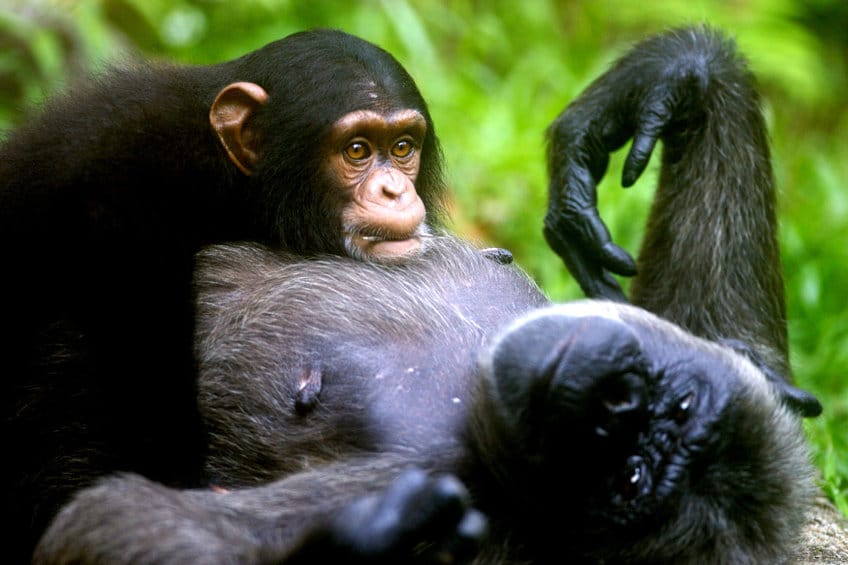By John Salak –
Man’s closest relatives—the great apes that include gorillas, chimpanzees and bonobos—are facing some tough times and how successfully they confront these pending challenges may tell humans something about the hurdles people face.
Several recent studies warn that in the next 30 years the triple threat impact of climate change, shifts in land use and the growth of human population will devour at least 85 percent of the great ape’s natural habitat—of which 50 percent will be outside national parks. The impact, however, could be even more drastic under a worst-case scenario that would result in a 94 percent loss in habitat, which more than 60 percent is projected to be outside of protected areas.
The leading study, which was sponsored by the Wildlife Conservation Society (WCS), also examined whether great apes will be able to adapt to these projected changes in large part by migrating to new regions. One possible scenario might have these primates moving to mountains that are currently less suitable for them than lowlands. However, climate change may ultimately make mountainous regions more livable, perhaps even affording great apes the chance to expand their range if they are able to shift to higher elevations, the study adds.
The catch in this best-case scenario is the “if they are able to shift.” There simply may not be enough time for these animals to adapt to these new regions or they may not under any conditions even be able to reach these higher areas, which are projected to be outside protect ape sanctuaries.
“As climate change forces the different types of vegetation to essentially shift uphill, it means that all animals—not only great apes—that depend on particular habitat types will be forced to move uphill along with the vegetation, or become locally extinct,” explained Fiona Maisels, co-author of the WCS study. “And when the hills are low, many species, great and small, will not be able go higher than the land allows, and huge numbers of animals and plants will simply vanish.”
The projected threat to the great apes comes at a time when primate species in general are facing declining populations. There are approximately 500 different types of primates worldwide, but more than 75 percent of these species are seeing their numbers decline.
They generally locate in tropical regions that stretch across four continents—Central and South American, Asia and Africa—with the vast majority residing in four countries: Brazil, Madagascar, Indonesia and the Democratic Republic of the Congo.
These countries, unfortunately, are likely to suffer more from climate change and primate habitat depletion than other areas, which puts a large number of monkeys, apes, lemurs, lorises and tarsiers at particular risk.
Largely unrealized in this depressing equation is that the threat to these primates extends well past their own wellbeing. It sets up potentially harmful consequences for their wider ecosystems as these animals are critical to pollinating flowers and dispersing seeds, among other issues.
Conservation coupled with an enhanced global response to climate change are the keys to stabilizing primate populations and assuring their related ecosystems remain in balance, according to a recent report in the academic website The Conversation.
However, it warned that expanding conservation areas, limiting human impact on primates and sufficiently controlling climate change is tough sledding. Even a slight increase in global temperatures, along the lines suggested by the Paris Climate Accord, could have a devastating impact on primates living near the equator. Beyond this, any expansion of conservation areas needs to account for projected increases in regional temperatures or these efforts may yield limited gains at best for these threatened animals, according to The Conversation’s report.
Not surprisingly, The Conversation warned the loss of various primate species could be a harbinger of pending disasters for humans.











